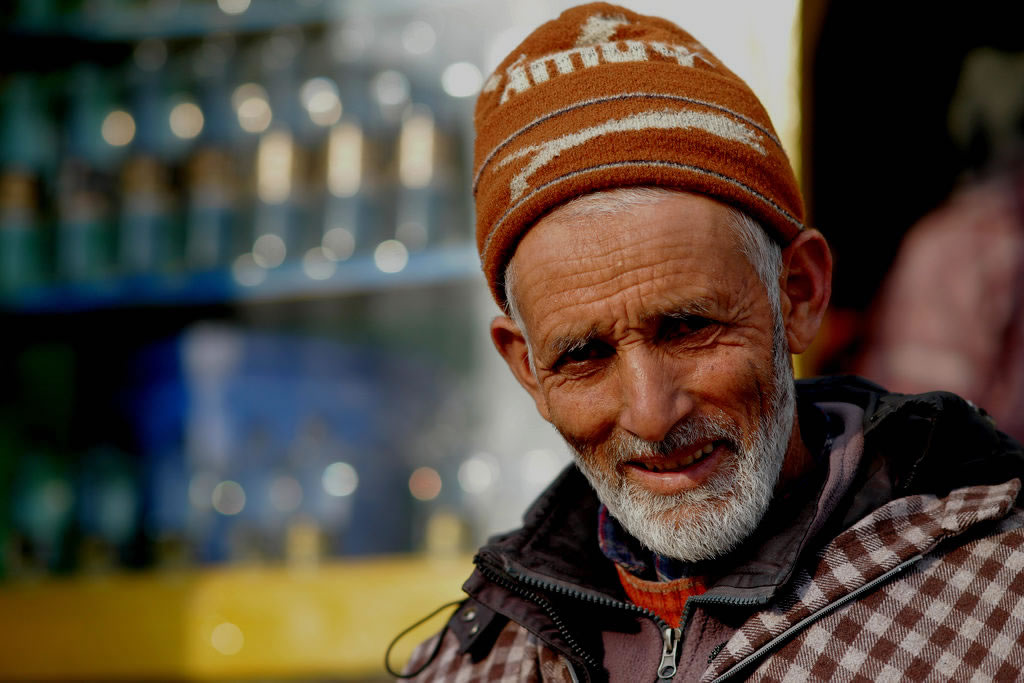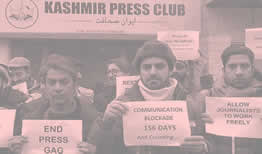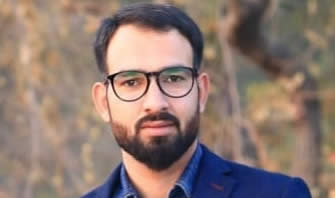Bollywood’s Cinematic Narratives: Shaping Youth’s Perspective of Pakistan and Kashmir Conflict
Bollywood’s Cinematic Narratives: Shaping Youth’s Perspective of Pakistan and Kashmir Conflict
Introduction:
The two nuclear neighbors, Pakistan and India, in the South of Asia have been in a constant state of conflict since independence from the British in 1947. The two have used every single platform available to express discontent and to maintain the balance of power, from military confrontations along the line of control which have led to several wars throughout the years, to diplomatic measures where both frequently engage in diplomatic tension leading to down gradation of diplomatic ties and even canceling of talks.
By Laiba Binte Zafar
Both Pakistan and India use their media to carry out
propaganda campaigns to fuel national sentiment and support the respective
governments’ stances, they also try to damage each other’s government websites
and infrastructure by hacking and making cyber attacks involving the two into
cyber warfare. At times when conflicts escalate both countries impose trade
bans and economic sanctions as a form of pressure, and the biggest hard power
tactic used by both is the nuclear tests that serve as deterrence but also a
constant source of tension.
Hard power is not the only way the two nations
express rivalry, but also through sporting events, especially cricket and now
javelin throw. These sports symbolize battles in which victory boosts the
nation’s morale. Lastly, a very efficient and effective soft power tactic, is
the cinema, through popular cinema, they easily spread their narrative to the
masses without being highlighted as spreading propaganda. All these stages of the confrontation show
that the conflict between the nation is very complex and versatile and the bone
of contempt between the two is the land of Jammu and Kashmir. Since the failure
of the proper division of the land of Jammu and Kashmir between the two nations
in 1947, both countries lay claim to their land and its people thus being in constant
conflict.
The Kashmir Conflict has been discussed
extensively in the United Nations, but none of the resolutions have even come
close to solving this conflict. With time the people of Pakistan and India
themselves are very conflicted by the situation in Kashmir, due to there being
a lot of misinformation, false rumors, and lack of access to primary
stakeholders of this conflict.
This paper discusses how India uses and has been
using its cinema to spread the Indian narrative of the Kashmir issue since
1992. The portrayal of Pakistan and Kashmiri Muslims in Bollywood has always
been a controversial issue, as they are often shown as wicked and the villain,
spreading terror in the IIOJK, which is consumed by the masses including the
youth and it generates perceptions and contributes to the stereotyping of the
Kashmiri Muslims and Pakistan, leading to the audience viewing this conflict as
a simple fight between good and evil and ignoring the on-ground situation and
reality.
It also
analyzes a survey titled “Bollywood's cinematic narratives”, this survey asked
about the opinion of the audience that consumes Bollywood films on how it has
affected and changed their opinion of Pakistan and the Muslims living in
Kashmir and if they believe that the revenue generated from these movies is
used to fund the conflict and to produce more films that spread the narrative.
This survey was conducted to gather primary data from people of all ages,
especially the youth of AJK, IIOJK, Pakistan, and India. Knowing their experience
can help us understand the depth at which the narrative building through cinema
is effective.
Key Words: Kashmir
conflict, Bollywood, IIOJK( Illegally Indian Occupied Jammu and Kashmir), AJK
(Azad Jammu and Kashmir), Narrative building, Youth
Bollywood’s negative portrayal of Pakistan and
Kashmiri Muslims (Mujahid) who Bollywood portrays as evil and terrorists, this
portrayal is builds a narrative in the youth that encourages stereotyping of
these communities and ruins their image in society, which leads to bad
relations between them and gives birth to a generation with misinformation
which ultimately leads to anti-Pakistan and anti-Muslim policies.
- In what ways do Bollywood films influence the perceptions and attitudes
of young audiences toward Pakistan and the Kashmir conflict? To what
extent do Bollywood films reinforce or challenge stereotypes about
Pakistan and Kashmiri Muslims?
- To what extent does revenue generation from
Bollywood films portraying the Kashmir conflict contribute to sustaining
or escalating the conflict?
- How do Bollywood's cinematic narratives impact India-Pakistan
relations, and what role can film play in promoting conflict resolution
and peacebuilding?
To
explore the issue of Bollywood’s narratives and their impact on youth a
qualitative content analysis is used which follows the study of primary and
secondary data. Most of the data is based on interviews done by YouTubers with
youth regarding how much they believe the message given through these films and
their opinion on Pakistan, and the primary data is based on a survey held
specifically for this research paper.
Significance:
When studying the Kashmir conflict, knowing the
role of cinema can help us understand how people perceive the stakeholders
involved. This research is significant in showing the effect of narrative built
by Bollywood in different contexts.
Bollywood is massive in India and is one of the
most distinguished features of Indian culture.
14 million Indians come to the cinema every day and since its start in
1913, more than 1000 movies are produced
in a year. The Indian people would mimic the character and dress up as the
character they love, repeat their dialogues, copy their hairstyle, and
personify their whole personality.it is fascinating to understand whether the movies are shaping
society or vice versa.
When
Bollywood portrays the Kashmiri Muslims and Pakistan as villains and
terrorists, this image is embedded in the memories of millions of viewers, they
associate these negative portrayals with the identities of the real people.
This influences not only the Indian youth but all the consumers of Bollywood
globally, which impacts the perception of the Kashmir conflict as well.
Importance of studying the influence:
By studying and analyzing the impact and
influence of the portrayal of Pakistan and Kashmiri Muslims, in Bollywood, has
on the youth we can better understand how cultural products can influence international
opinion. Through this knowledge, we can also identify and mitigate any false
knowledge or negative stereotypes that have been spread to the audience.
Cinema is a very impactful form of entertainment
and the audience most affected by it is the youth, not just the movies but also
the actors in these films have a huge influence on their lives. These movies
rule over their minds, and their lifestyles, and every aspect of their life is
moved and changed by Bollywood movies, this research paper is filled with such
examples.
Youth make up more than 66% of the people of
India and 80% of them have access to mass and social media. The portrays of
actors and actresses in these movies fascinates and mesmerizes the youth and
make them believe these are perfect human beings. When such actors work in
films that create a certain narrative towards the Kashmir conflict and show
them fighting against the evil Kashmiri Muslims and Pakistan, this youth whose
opinions are still being formed, begin to believe in these perceptions and it
has a lasting impact on their opinions.
Today’s youth has not been taught the difference
between the real world and the reel world. The youth and children learn through
the processes of observation and social cognition. If they are kept exposed to
Bollywood’s constant portrayal of Pakistan or Kashmir as evil or in a biased
manner, and if all the adults or the other children around them show hostility
towards these communities, it contributes to the evolution of a generation with
prejudice and negative attitudes towards these regions. In the same way,
positive portrayals could foster a more informed and sympathetic generation.
Media’s role in shaping the public opinion:
Media plays a crucial role in influencing people’s perceptions. It circulates information, raises awareness, provides education, and enables people to understand various global, social, and environmental concerns. Public opinion often influences political decisions and policy-making, especially in democracies where public opinion is a significant factor. The narrative built by the media regarding Kashmir by Bollywood can shape the discussion about this issue and Pakistan-India Relations. Though influential, the message from media is not always received uniformly by all audiences, some trust in their research and only give importance to the news circulated by the major media platforms and news channels for some time as explained by the agenda-setting theory.
Intercultural relation:
Bollywood films that portray Pakistan and Kashmiri Muslims as antagonists like ‘the Kashmir Files, ‘Mission Majnu’, ‘URI: The Surgical Strike’, and ‘Article 370’, such movies further push the stereotypes, if the audience keeps perceiving this image can deepen the already existing tension between Pakistan and India and hinder to encourage better relations and understanding. On the other hand, films that offer a balanced and more neutral portrayal have the potential to break down barriers and prejudice and show the audience a more human side of the “other side”, such as done in movies like ‘Haider’ and ‘Raazi’. By making such movies Bollywood can contribute to reducing hostility and promoting dialogue.
Objectives:
This study aims to understand how these
portrayals influence young audiences' perceptions, attitudes, and beliefs. This
involves a survey, focus group, and analysis of interviews with young viewers
to estimate the extent to which Bollywood films have influenced their view on
Pakistan and the Kashmir issue. By identifying the pattern in how the youth
interprets these narratives, this study offers insight into the role Bollywood
films have played in shaping the attitudes of generations towards the Kashmir
dispute.
Assess Stereotype Reinforcement:
Analysis of Stereotypes:
The study will examine how Bollywood films reinforce or challenge the stereotypes about Kashmiri Muslims and Pakistan by looking at the character representation, dialogue, and plotlines to define the existence and impact of these stereotypes.
Possibility of Change:
The analysis will also investigate whether there has been a shift in the stereotyping of Kashmiri Muslims and Pakistan, from plain stereotyping to more complex and intricate characters.
Cinematic Impact on India-Pakistan Relations:
This paper will also look into whether the
narrative created by Bollywood is creating a culture of hostility or
familiarity between the people of Kashmir, India, and Pakistan. It will also analyze how these
impact the diplomatic relationship between the two.
By achieving these objectives this paper seeks
to deliver a thorough understanding of the powerful impact Bollywood plays in
shaping not just entertainment but also political and social narratives.
It aims to contribute to the discussion on media influence, intercultural relations, and the responsibility of filmmakers when they make films on sensitive and complex real situations.
Survey details:
The purpose of the survey "Bollywood's Cinematic Narrative and its Influence," is to investigate how Bollywood's cinematic narratives affect young people, especially in light of current representations of Muslims in Kashmir and Pakistan. Bollywood has made films in the last few years that explore delicate geopolitical subjects, frequently affecting public opinion and societal views in the process. knowing how audiences, particularly in India, Pakistan, and Kashmir, interpret these stories. With a focus on how these movies might impact young people's perception of complicated subjects, this poll aims to collect a range of viewpoints regarding the impact of these movies on political and social beliefs.
Population
and sample:
People of different ages across India, Pakistan, and Kashmir participated in this survey, the majority being 18 to 24 years of age
Survey
method:
The survey was held online on Google Forms. It
was delivered to the target audience through social media like WhatsApp,
Instagram, and LinkedIn, the description of the survey also mentioned the
desired target audience.
The questions in the survey all themed around
the effects and changes Bollywood has brought in the opinions of the audience,
regarding Kashmiri Muslims and Pakistan, it also asked if they believed that
the films were affiliated with politics and were spreading a narrative and if
their revenue is being used to fuel the conflict and to spread propaganda
against certain entities.
The survey had multiple-choice questions as well
as open-ended questions for those who wanted to provide their detailed opinion.
The data of the survey was collected over three
weeks. All responses came in from different places, people from different
countries, and different gender and age groups from multiple social media
platforms. Being a young researcher in Pakistan had its limitations and it was
hard to find a young audience from India, especially IIOJK.
The analyzed literature spoke about the
portrayal of the conflict over the years and how its themes changed with time
but they failed to describe how these portrayals built a narrative that was
based on biased opinions. These papers failed to explain how youth is affected
by such films and how they start nurturing hate and hostility towards not only
Pakistan but also towards the Kashmiri Muslims whom they claim are one of them.
There is a lack of talk on how Bollywood takes fictional themes and mixes them
with real-life incidents and paints a very anti-Muslim picture and how the
audience believes it to be real. There is no research on how these movies are
promoted in cinema, and how their revenue is used to further spread the
narrative. There’s also a lack of talk on how the recent Kashmir-based movies
show a very pure and angelic Narendra Modi, and how these movies are being used
to generate a vote bank for him and his party.
This paper aims to cover all these aspects and
show the influence Bollywood has on youth.
Narrative Framing and Storytelling:
Bollywood
is one of the biggest cinemas in South Asia, its music, the Indian culture it
represents, the plot of the movies, and the Bollywood actors, are loved by many
all over the world. Since the start of the Bollywood film industry, it has been
releasing approximately 1000 movies per year. To keep up with the demands of
its audience, movies have been produced in multiple genres with different plot
lines, hence most of the movies are not well-known or loved. Still, the one
genre that always guarantees a big audience at the cinema is the movies based
on the Kashmir conflict and the confrontation between the Indian and Pakistan
armies. The portrayal of Kashmiri Muslims and Pakistan in Bollywood often
reflects the political and social tensions between India and Pakistan, several
of these have been criticized for their themes and can be interpreted as
spreading a negative stereotype or hatred towards Kashmiri Muslims and
Pakistan. Some notable examples of these films are ‘Roja’ (1992), Mission
Kashmir (2000), ‘Haider’ (2014), Raazi (2018), ‘Uri: The Surgical Strike’
(2019), ‘The Kashmir Files (2022), and ‘article 370’ (2024).
Bollywood
often shows Pakistan and Kashmiri Muslims as antagonists, they reinforce the
portrayal of India as the hero and Pakistan/Kashmiri Muslims as the villain.
Showing such a portrayal again and again influences the young audience and
their views and opinions. Due to the lack of interaction between Indian and
Pakistani people due to their hostility towards each other, the knowledge they
have about each other is that which is shown in media, in the cinema, and
through word of mouth. In an interview, a young man stated that there is a lack
of knowledge about Pakistan because it was not a part of their curriculum, some
Indian students state that applying for a visa to Pakistan is hard, and as a
result, they’ve never been to Pakistan and never had any interaction with a
Pakistani person so their opinions are based on what politicians say and what
the media portrays.
The
plot of Kashmir-based Bollywood films is always somewhat similar with the
Indian army as the heroes, Pakistan's ISI helping the freedom fighters in
Kashmir, whom they portray as ruthless terrorists, and Pakistan and these
mujahids (Kashmiri freedom fighters) trying to bring unrest in the region to
which the Indian army teaches them a lesson, just as shown in ‘URI: The
Surgical Strike’, ‘Article 370’ and many more. This simple portrayal of the
battle between good and evil completely overlooks the on-ground situation. It
completely ignores Pakistan's claim of no involvement in the smuggling of
weapons or of attacks on the Indian army in the IIOJK, for example, the attack
in Uri 2016, and the Pulwama attack 2019, Pakistan has rejected involvement in
all these incidents but Bollywood has produced films on them claiming these
were done by Pakistan, as a result, the youth believes that there is the involvement
of Pakistan in every single bad incident that takes place in IIOJK.
A
little while after the Pulawama attack in a street interview a young Indian man
says to the interviewer that Pakistan had planned the attack and is responsible
for the deaths of the Indian soldiers, even if Pakistan has denied these
accusations it is a lie as it wants to save face in front of the international
world to avoid their trade and funding from stopping, he states that Pakistan
will always hate India and his anger and hate towards Pakistan is very obvious
throughout the interview. (yt:asain boss) Bollywood kept up this narrative and
reenacted the Pulwama incident in its movie ‘Article 370’, which showed that
the attack was done by a young Kashmiri boy, who was part of the mujahids
backed by Pakistan. In the movie the love interest of the main lead, who was an
Indian army officer, died in this attack, which made the scene very personal
and emotional, to the audience watching it, it caused emotions of anger and
revenge from the Kashmiri mujahideen and Pakistan and deepened a seed of hatred
towards them by enforcing the narrative that they are the ones that have spread
the terror in IIOJK.
In the survey when asked how the audience perceived Pakistan and Kashmir from the recent Bollywood movies 78.9% said negative.
Nationalism
and Patriotism:
Nationalism and patriotism are two themes that
are repeated in Bollywood movies, especially movies based on the Kashmir
conflict. These themes play a major role in shaping the narrative of the
audience. These films highlight and focus on Indian nationalism, they show the
Indian military and intelligence as noble, just, and self-sacrificing,
defending the nation against all external and internal enemies. They often
contrast this positive image with the negative depiction of Pakistan and
Kashmiris, using these external threats as a trigger for patriotism and
reinforcing nationalistic sentiments among young viewers.
Bollywood often uses historical or fictional conflicts and shows them through a biased lens to evoke a sense of nationalism. Films based on such border conflicts frame the struggle and defense of the nation’s honor and sovereignty showcasing the courage of the Indian military. For instance ‘Uri: The Surgical Strike’ release overlapped with the intense tensions between India and Pakistan, which resonated with the nationalistic zeal, which had a significant impact on the public sentiment. The movie was based on the Uri attack in 2016 but also has fictional characters and a very biased plot. The people who saw it in the cinema called it the best movie for the Indian army.
The boost it had on the pride of the audience had them all out
of their seats, movie analyst and YouTuber Pratic Borade in his review said
that any Pakistani who watches this film will not be able to sleep at night. He
states that now the Indian army does not need anyone’s permission to shoot at
the mujahideen and this makes the Indians believe that their nation is becoming
clean and free of threat, completely ignoring the human rights violations this
law causes, and the number of unexplained disappearances and arrests, all
targeted towards the Kashmiri Muslims. This movie review showed that the Indian
audience is very focused on the stance of Indian politicians and the Indian
army, they do not see the Kashmiri freedom fighters and their struggle as a
conflict that should be solved through dialogue, they see these freedom
fighters as terrorists and want them dead whatsoever, they believe by killing
them it will make India safer and will be a loss for Pakistan through this it
is very clear the influence Bollywood and media has on the audience.
Some movies focus on political figures who
embody patriotic values. Such movies showcase a conflict in which the Indian
army is backed by a certain political leader and collectively the support of
the entire nation, which allows them to win against the enemy, by mobilizing
the public sentiment in this way these movies influence a political debate. For
instance ‘Article 370’ and ‘Uri: The Surgical Strike’ revolve around the
saint-like character of Indian Prime Minister Narendra Modi whose unwavering support and absolute
trust brought flawless victory, in both the movies the result was achieved
without any hindrance to the plan because the main leads were backed by
Narendra Modi and BJP.
Pratic Borade in his review thanks Modi for making this possible for India. The comments on this movie review were almost all from Indian, native, and abroad. They showed pride towards the Indian army and they praised Narendra Modi and vowed to vote for him in the upcoming elections in 2024. One comment said “I watched as I am also from an army background and I loved it, I do support Modiji wants our pm to come again as pm”, another commented “Mere papa paralyzed hain lekin wo bhi is saal bjp ko vote dene jayenge. (My father is paralyzed, but he will still go to vote for BJP this year) “, the commenters also mentioned going to the cinema for this movie and taking their friends for the sake of revenue.
They aimed to make it the highest-grossing
film in India for the entire year, one person commented “I live in Canada and I'll make sure to watch this movie with all my
friends to increase its dollar revenue. I have a lot of friends from different
countries( including Pakistan) i will take them along with me. Jai Hind! Vande
Mataram! Jai Modi Ji”.The narrative built by these movies is not only
anti-Muslim and anti-Mujahedeen but also pro-Modi and is used to increase the
BJP vote bank.
In the survey when asked if Bollywood influenced people’s political and social opinions most responded in a yes.
Another question asked if the audience believed that politics and the narrative Bollywood presented were related to one another.
The portrayal of nationalism in Bollywood serves as a form of soft power, it shapes how the local and international audience perceive India’s identity, its opinion on Kashmiri, Mujahedeen, Pakistan, and its values. BJP is a firm follower of the Hindutva ideology, they may claim that Muslims in Kashmir are a part of them but the reality is much more grim. This can be proved by the release of the film “The Kashmir Files” in 2022. The controversial movie is based on the exodus of Kashmiri Pandits from Kashmir as they fled the violent Islamic Militants in the 1990s.
The movie ignores all the political and geographical
complexities and blames the Kashmiri Muslims alone. The graphic violence
belittles Muslims and reinforces the negative stereotypes. It fails to depict
any example of solidarity between the Muslims and the Pandits during this hard
time. Umesh Talashi, when he spoke to CNN, in his interview explained how sympathetic
Kashmiri Muslims helped his father hide from the extremist militants.
The depiction of all Muslims as cruel terrorists
in the movie fueled hate and created a social divide instead of healing the
wounds.
After the movie’s release, Youtuber Bol Ychan interviewed those who watched it at Lucknow Mall India. One said he cried after seeing the movie and he wanted to rip out the hearts of Kashmiri traders who came to Mumbai with their blankets and screamed that they should destroy the mosque and that the Hindus had endured it long enough, this time they’ll kick the Muslims out of their nation. He said their women be warned, they will now go through the same treatment that the pandit women went through in the movie. A woman came out of the cinema in tears and thanked the director for making this movie and “showing the truth”.
When the interviewer asked if Bollywood should make more movies like this, she
agreed and stated that Bollywood always makes ‘masala films’ and spreads
propaganda, so a true movie like this should be made, this shows that the
audience believes that everything portrayed in the film is completely true and
Muslims are pure evil.
After the movie ended and people were upset at
the government for not doing anything while such atrocities were unfolding on
the Kashmiri Hindu pandits, they stated that it’s hard to show the truth and
even harder to see and listen to the truth, the men stated that all Indians
need to unite and make sure something about this is changed and that such an
incident is never overlooked again. This shows how much a Bollywood movie had
moved the sentiments of the Indian
people, and how in a matter of seconds people had hate for Kashmiri Muslims and
Muslims in general. In another interview, an audience member, a man in his
mid-50s, said this is not a film, it's the truth that the secular government
tried to hide. He claimed that people who support secularism are a threat to
our Hindu identity and will ruin the Indian youth and future generations, after
saying this he was applauded by the crowd in the cinema. His extreme reaction
shows the promotion of Hindutva ideology and the spread of islamophobia through
Bollywood. (yt: sab dekh rha hia binod)
The majority of this movie’s success is credited
to India’s Hindu Nationalist ruling party BJP. Although they did not fund the
movie’s production, there has been a lot of praise from political leaders
including Indian Prime Minister Narendra Modi, who during a conference praised
the movie for “showing the truth”. PM Narendra Modi has previously been
criticized for failing to condemn violence against Muslims. He and his party
backed this movie by waiving tax on tickets, in states that were ruled by BJP
and others gave police officers and government workers time off to watch the
movie. Indian filmmakers have long censorship with their movies being banned
from cinema due to religious objections and accusations of indecency. For
example drama ‘Parzania’ (2007) and, the Netflix series ‘A Suitable Boy’,
Director Rahul Dholakia faced many challenges in promoting the film due to
officials citing law and other concerns.
In comparison to this the support BJP gave to
‘The Kashmir File’ makes double standards very obvious. It was screened in
cinemas all across the country despite the violence and exaggerated portrayal
of historical events. This shows how Bollywood recreates historical events and
portrays them through a biased lens and creates hatred and loathing in the minds
of youth regarding Kashmiri Muslims and Pakistan. Promotion of The Kashmir
Files backed BJP’s Hindutva ideology by making the entire audience feel hatred
towards Muslims. The Muslims of Kashmir and those who went to see this movie
felt very unsafe and insecure while watching it. Journalist Rana Ayyub left the
movie just 30 minutes into it, feeling humiliated and unsafe, a man even yelled
“Ja Pakistan (go to Pakistan)” at her as she was leaving.
In the survey when asked if the audience believed that Bollywood was a form of propaganda 89.5% people agreed.
They depict Muslims holding weapons, wearing heavy kohl eyeliner and shalwar Kameez as they commit acts of violence, in every movie, making this the stereotype of what a Muslim man looks like. Despite claiming they love and care for Kashmir the Indian government has backed and praised a completely anti-muslim movie, which shows the bias towards the Hindus in India. Historical incidents are sensitive topics as the emotions of the masses are affiliated to them, by showing them with a biased lens, Bollywood influences the minds and opinions of the youth to make them believe the narrative.
Revenue from the films:
Bollywood
is one of the biggest and most successful cinemas in South Asia and the whole
world. The Bollywood movies if successful can make very huge profits such as
profits of over ₹340 crores (approximately $45 million) made by the ‘The
Kashmir files’ in 2019. The money generated from these movies is used to
produce new movies that continue to spread the anti-Muslim and anti-Pakkstan
narrative, for example, the movie ‘ Uri: The Surgical Strike’ directed by
Aditya Roy grossed approximately $39,346,577, which was a
huge success and lead him to produce another film on a very similar theme in
2024 called the ‘Article 370’ which Box Office Gross Estimated around ₹150
crores (as of 2024).
Notable Films and Their Profits
- Roja (1992)
○ Budget: ₹2.2 crore
○ Indian Box Office Gross: ₹4.75
○ Profit: ₹2.55 cr
○
- Gadar: Ek Prem Katha (2001)
○ Budget: ₹18 crore
○ Box Office Gross: Over ₹76,88,00,000
○ Profit: ₹582 crore
- Uri: The Surgical Strike (2019)
○ Budget: ₹60 crore
○ Box Office Gross: $39,346,577
- Raazi (2018)
○ Budget: ₹300,000,000 (estimated)
○ Box Office Gross: $1,812,763
- Article 370 (2024)
○
Budget:
Not publicly disclosed
○
Box
Office Gross: $13,222,021
While the precise revenue generated by each film
varies based on the source and calculation method, the above data provides a
general overview of the financial success of Bollywood films in India,
Pakistan, and the Kashmir region.
These films not only provided the Bollywood industry with large sums of money but also influenced the international view and opinion of the Kashmir conflict. Uri and Gadar attracted the audience by using nationalistic themes, meanwhile, The Kashmir Files used the element of history and focused on the anti-Muslim events and emotions of the people, further promoting Hindutva ideology. The money generated from these movies is often used to support new projects that portray the stories along the same line and reinforce specific perspectives on Kashmiri Muslims.
Research Paper By Laiba Binte Zafar
5th semester National Defense University
Related Research Papers



























